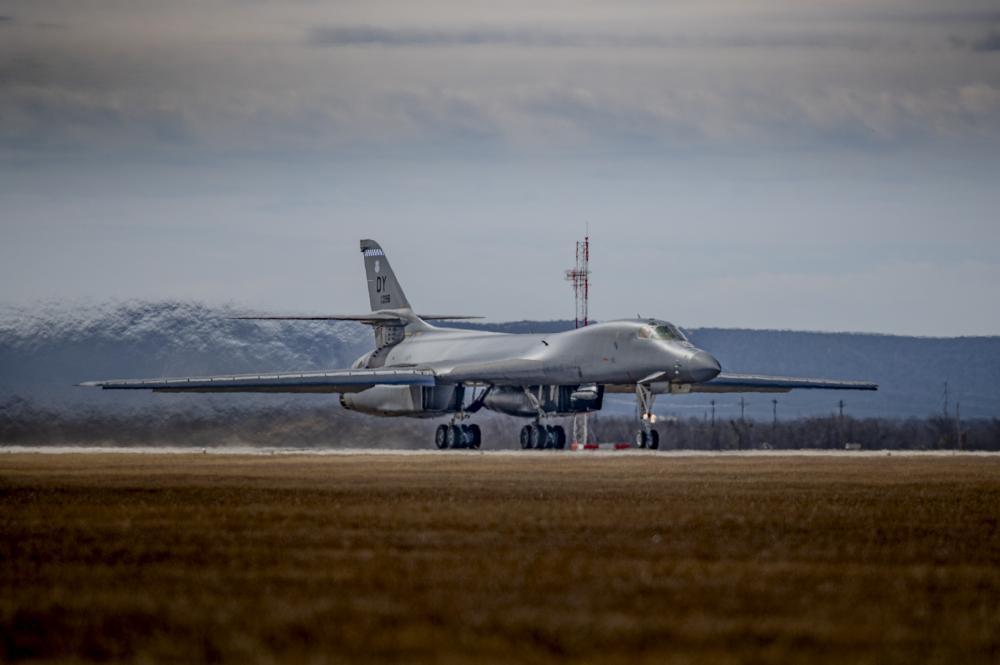Airmen from the 9th Bomb Squadron and 9th Aircraft Maintenance unit recently participated in Red Flag 22-2 at Nellis Air Force Base, Nevada, and returned home to America’s Lift and Strike Base on March 18, 2022. The exercise is a simulated combat training exercise that gives aircrew members from the U.S. Air Force, U.S. Navy, and its allies an opportunity to experience advanced, relevant, and realistic combat-like situations in a controlled environment to increase their abilities to complete missions and safely return home. Red Flag 22-2 concentrated on three primary themes including defensive and offensive counter-air techniques, and air interdiction. Each aircrew that participated in the exercise executed various tactics and built dynamic agreements with other aircrews so they can efficiently and safely achieve the overall objectives of each mission.
“Red Flag aims to offer combat aviators the most realistic air war training environment available. This exercise provided us with the opportunity to fly and train against simulated aggressor forces comprised of both air-to-air and surface-to-air threats providing our young aviators the opportunity to grow and learn in a controlled environment. This was a great exercise for members of the squadron as we gained a solid boost in experience and readiness,” said Lt. Col. Nathan Jenkins, 9th BS commander.
“As a mission commander, we have to facilitate and enable the team leads from each specialty to develop a game plan to achieve each mission’s objectives. It also helped us learn how to protect the defended asset list, strike pre-planned air tasking order targets, conduct personnel recovery, and strike dynamic and time-sensitive targets,” said Capt. Erika Tucker, 9th BS Red Flag mission commander.

The 9th Bomb Squadron is a squadron of the United States Air Force. It is assigned to the 7th Operations Group, Global Strike Command, stationed at Dyess Air Force Base, Texas. The squadron is equipped with the Rockwell B-1B Lancer bomber. Formed in June 1917, the 9th is one of the oldest squadrons in the Air Force. During World War I, the squadron was the first American night reconnaissance squadron to be organized. The 9th Bomb Squadron maintains combat readiness to deliver rapid, decisive airpower on a large scale in support of conventional warfare taskings. Squadron experts provide warfighting commanders with the best in maintenance support, operational aircrews, and Rockwell B-1B Lancer aircraft. The squadron repairs, services, launches, recovers, and inspects 15 B-1B Lancer aircraft capable of sustained intercontinental missions and worldwide deployment/employment from forwarding operating locations.
Approximately 1,750 personnel from the U.S. Air Force, Marine Corps, Navy, and Air National Guard trained alongside members from the Royal Saudi Air Force and the Republic of Singapore during the exercise. During the various missions, the participants engaged in various scenarios where they were exposed to a realistic, representative, and integrated tactical experiences. As the 9th BS personnel trained alongside their fellow aircrew, the Airmen focused on internal training as well. The squadron ensured three members received upgrade training to become mission commanders, where they are responsible for planning, execution, and debriefing of an entire airborne mission with as many as 30 joint and coalition aircraft. Members of the 9th BS also completed 17 sorties and four strike package commander upgrades with their team of 29 aircrews and 74 maintenance personnel supporting three B-1B Lancers during the exercise.
















